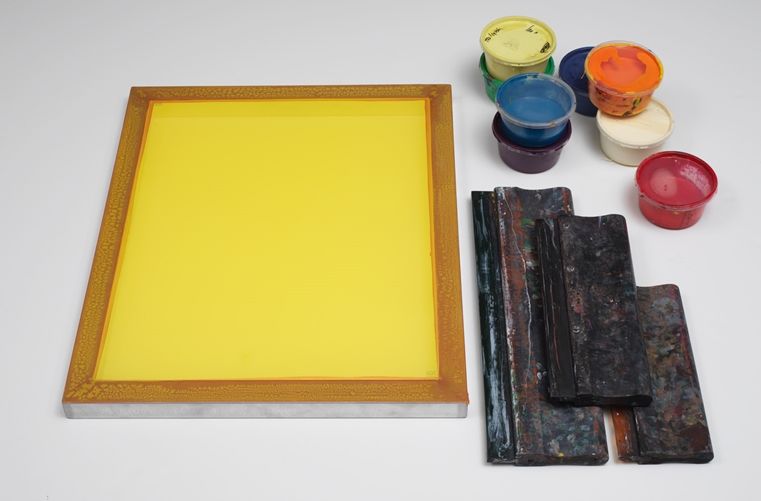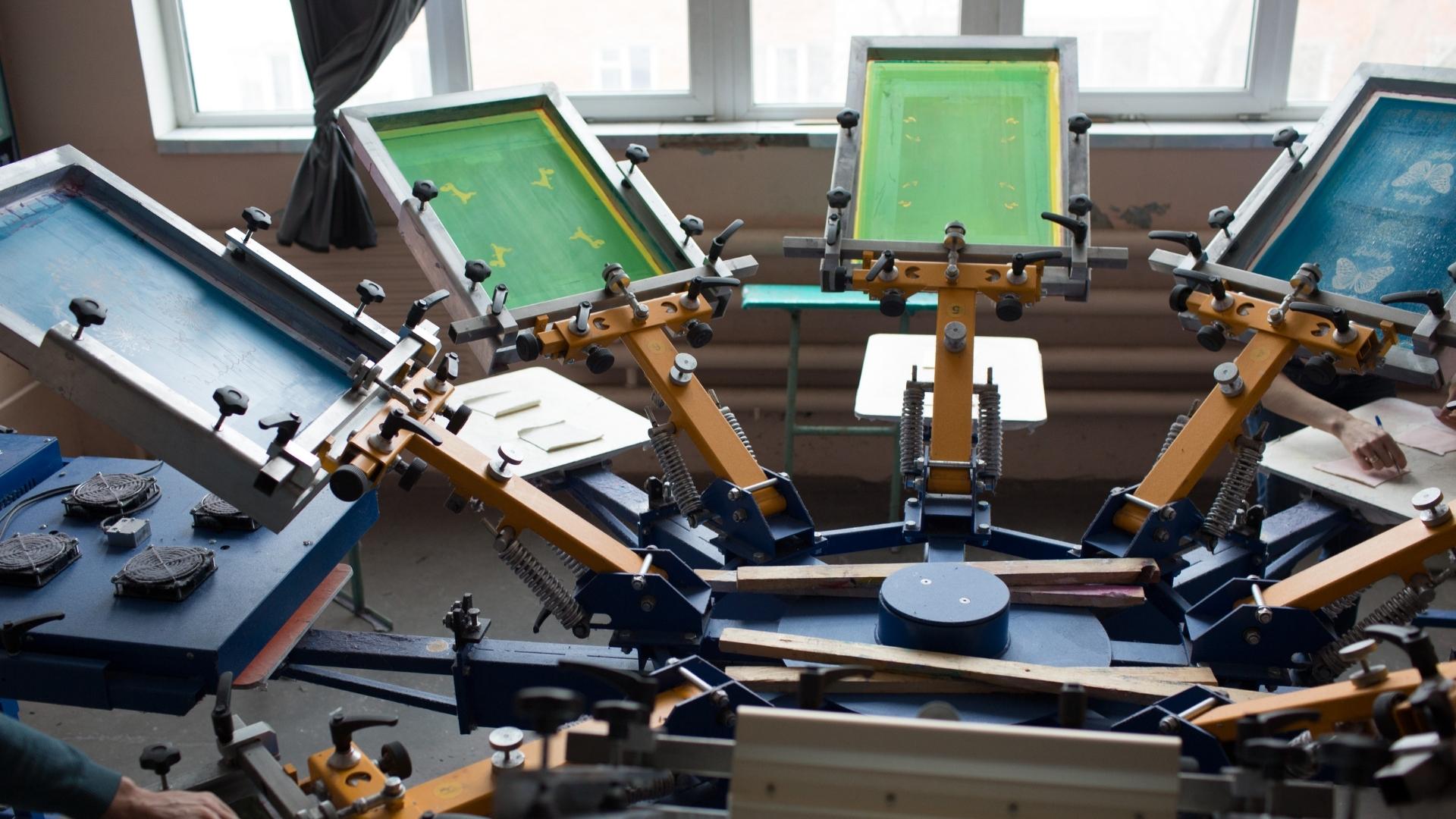The Crucial Overview to Understanding Screen Printing and Its Versatile Utilizes
Screen printing has an abundant history that goes back to old times, developing into a sophisticated method utilized throughout various industries today. This guide explores the complexities of the screen printing process, outlining its applications in style, home, and marketing style - 10:9 Design contact. Recognizing these basics can open innovative possibility for both imaginative and commercial projects. The complying with sections will certainly disclose important ideas and methods to enhance one's screen printing ventures
The Background of Screen Printing
Screen printing has roots that map back centuries, its evolution shows the artistic and technical innovations of numerous cultures. Coming from old China, the method was originally used for embellishing fabrics and later infect Japan, where it became essential to Ukiyo-e woodblock printing. The approach moved to Europe in the 18th century, where it gained appeal among craftsmens and industrial printers. The creation of photo solution in the 20th century revolutionized screen printing, permitting for even more intricate designs and better performance. Musicians like Andy Warhol further thrust its popularity, making use of the medium to produce famous jobs that combined commercialism and fine art. By the late 20th century, screen printing had developed itself as a functional method, employed in style, advertising, and great art. Today, it remains to evolve, integrating electronic innovation and increasing its applications across numerous industries.
The Screen Printing Refine Explained
Screen printing transforms creative visions right into substantial styles with a collection of precise steps. A picture is developed and then transferred onto a screen, commonly made of fine mesh fabric extended over a structure. A light-sensitive emulsion is applied to the screen, which is revealed to light, setting in areas not covered by the image. After washing out the unhardened emulsion, a pattern is formed.
Next, the screen is put over the substratum, whether it be textile, paper, or one more material. Ink is then pressed with the open areas of the pattern utilizing a squeegee, transferring the style onto the substrate below. This process can be repeated for numerous colors, calling for separate displays for every color. The published item is healed utilizing warmth to assure the ink adheres properly, resulting in a long lasting, vivid design ready for use.
Types of Screen Printing Techniques

Additionally, specialized strategies, such as discharge screen printing, eliminate dye from the material to create softer prints, while aluminum foil screen printing uses metallic foil to attain a glossy coating (10:9 Design Texas). Each method provides distinct characteristics, dealing with different innovative requirements and production scales, ultimately expanding the possibilities within the screen printing domain
Applications of Screen Printing in Numerous Industries

In addition, the signs and advertising and marketing industries use screen printing for producing attractive displays and banners. This method permits strong colors and intricate styles that catch attention. In electronics, screen printing is employed for applying conductive inks to circuit boards, crucial for element links. website Moreover, the home decoration sector welcomes screen printing to generate distinct layouts on textiles and wall art. Overall, screen printing serves as a critical device throughout varied areas, boosting products with individualized and aesthetically appealing graphics.
Tips for Successful Screen Printing Projects
While embarking on a screen printing task, careful attention to detail can significantly improve the last end result. Initially, picking high-quality materials is vital; this consists of the screen, inks, and substratums. Making use of ideal mesh matters can affect ink deposition and detail resolution. Preparation is similarly vital; complete cleansing of screens and appropriate exposure times assure crisp prints.
Next off, accurate registration is critical for multi-color prints. Utilizing alignment tools can assist attain exact layering. Additionally, screening prints on scrap materials prior to manufacturing assists identify possible problems without squandering resources.

Regularly Asked Questions
What Products Are Ideal for Screen Printing on Fabric?
Cotton and polyester blends are perfect for screen printing on textile as a result of their longevity and ink absorption. In addition, specialty fabrics like silk or canvas can produce one-of-a-kind structures and surfaces, enhancing the general style quality.
How Do I Tidy and Maintain Screen Printing Equipment?
To preserve and clean up screen printing tools, one should consistently clean displays with ideal solvents, evaluate mops for wear, oil relocating parts, and shop all things in a completely dry, dust-free atmosphere to extend their life expectancy.
What Are the Environmental Effects of Screen Printing?
Screen printing can have considerable ecological effects, consisting of chemical waste from solvents and inks, water usage throughout cleansing processes, and energy intake. Sustainable practices and environment-friendly products are essential for decreasing these adverse effects.
Can Screen Printing Be Done at Home Effectively?
Screen printing can be effectively done at home with the best materials and strategies. Enthusiasts can produce top quality prints, though success depends upon their ability level, devices, and understanding of the procedure involved.
What Are the Expenses Related To Beginning a Screen Printing Service?

Starting a screen printing business includes costs for devices, materials, and workspace. First expenses normally range from a couple of hundred to numerous thousand dollars, depending on the range, high quality of machinery, and wanted production capacity.
Screen printing has an abundant history that dates back to old times, advancing into a sophisticated technique utilized throughout various sectors today. Another strategy, rotary screen printing, uses cylindrical displays, helping with continuous printing on material rolls, thus boosting efficiency for large productions. Furthermore, specialized techniques, such as discharge screen printing, eliminate color from the fabric to develop softer prints, while aluminum foil screen printing applies metallic aluminum foil to achieve a glossy finish. In the fashion industry, screen printing is widely made use of to produce vivid layouts on apparel, enabling brands to showcase their distinct styles. Cotton and polyester blends are suitable for screen printing on material due to their durability and ink absorption.